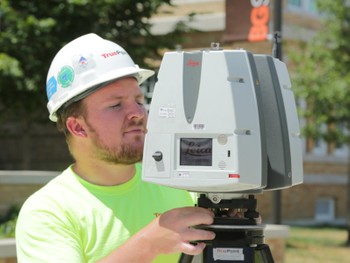
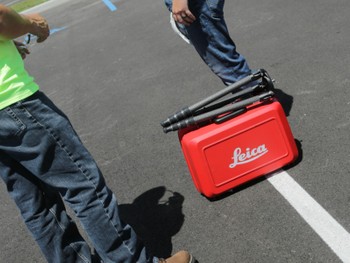
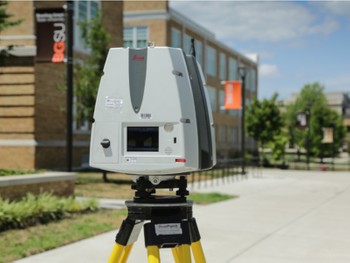
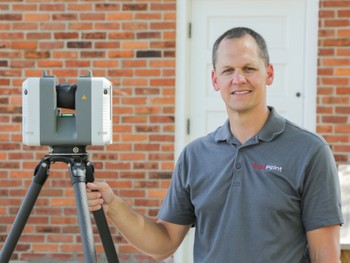
Why Do We Use Leica Laser Scanners?
Our experienced project managers use Leica P-series laser scanners for architectural, engineering and construction projects. This series of scanners is professional-grade, offering outstanding range, speed and the highest quality 3D data. We believe Leica has the best 3D laser scanners on the market. We have tested other scanners and they do not compare. Other scanners, such as the Faro and the BLK2Go are consumer-grade, capturing physical objects with less accuracy.
Leica has been revolutionizing the world of measurement and survey for 200 years. They offer premium products and innovative solutions to a large number of industries, such as construction, manufacturing, healthcare, water treatment facilities, education, entertainment, aerospace, government, defense and more. Leica is a complete laser scanning solution with precise and accurate instruments, sophisticated software, and dependable services. Leica P-Series ScanStations can tie to survey control, achieve 2-4mm accuracy and have real time liquid filled dual axis compensation to help mitigate movement and ensure level scans.
Leica laser scanners offer these advantages:
1. Unsurpassed scan speed and image capture -- The Leica RTC 360 scans at two million points per second and captures a full-dome HDR image in one minute. This means you can complete a full high-resolution scan of your project in less than three minutes with true HDR imagery. Running the scanner at maximum speed without HDR images allows you to complete scans in less than 30 seconds.
2. High data quality of the scans -- The point cloud from Leica laser scanners is complete, clean, and crisp with no invalid points “floating” in the scan data.
3. Geometric accuracy -- The geometry of scanned objects will be correct, other laser scanners return rounded edges.
4. Low range noise -- Leica laser scanners achieve clean, high-quality scan data with low range noise at a high scan speed. Other laser scanners require scanning at a lower speed to obtain low range noise.
5. Mixed pixel filtration -- Leica laser scan data is well filtered. The scanner’s on-board and import algorithms are highly intelligent. For example, rain and snow noise is now recognized as noise and is disregarded during the collection and import process using mixed pixel filtration.
6. HDR photo quality images -- HDR photography involves taking multiple images at different exposures and combining them into a single image with greater dynamic range – that is, capturing detail both in the shadows and in the bright. Images that are too dark or too light can obscure important scene details.
7. Survey-grade dual-axis compensation -- Real time liquid filled dual axis compensation helps mitigate movement and ensure level scans.
8. Superb data management -- High-speed, high-quality laser scanning gives you the ability to capture a lot of data very quickly. Leica laser scanners store hundreds of gigabytes of data and transfer hundreds of megabytes of data per second. Other scanners rely on an open-format SD card to store and transfer this data, and will quickly max out on storage space.
9. In-field pre-registration -- Leica offers an in-field pre-registration system that integrates software with hardware to optimize efficiency.
As the popularity of 3D laser scan technology has accelerated, so has the expansion of scanner types and brands. Clients expect their site to be documented quickly and accurately and with Leica we can do that.
For more information on TruePoint Laser Scanning services email info@truepointscanning.com.

The point cloud from the Leica RTC360 is complete and clean, with no invalid points (left). The point cloud from the other high-speed laser scanner is incomplete with invalid points (right).

The point cloud from the Leica RTC360 is complete with low range noise and correct geometry (left). The point cloud from the other high-speed laser scanner (right) has high range noise at areas with a perpendicular incidence angle and holes in the data at areas with a flat angle of incidence. The geometry of the scanned object is also incorrect.
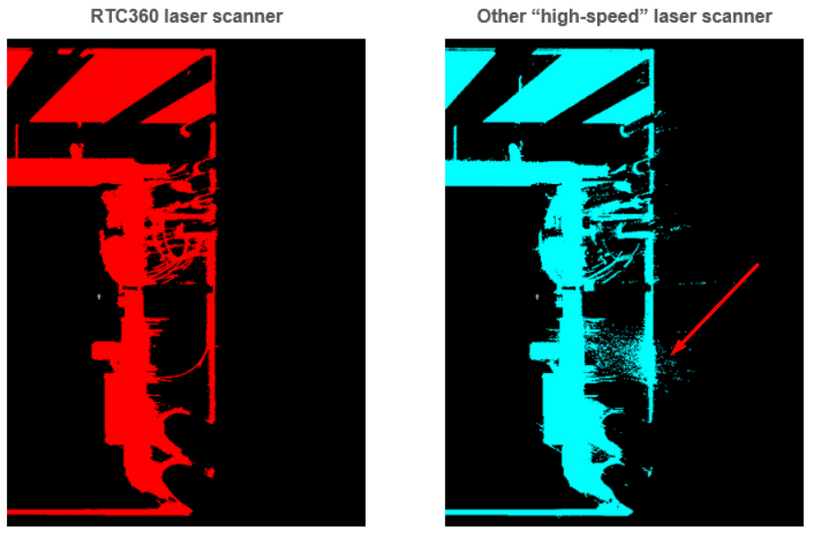
Mixed pixels between pipes, cables and wall are filtered well in the Leica RTC360 data (left), while a group of invalid and unfiltered points can be seen on the right in the data captured with the other high-speed laser scanner (right).
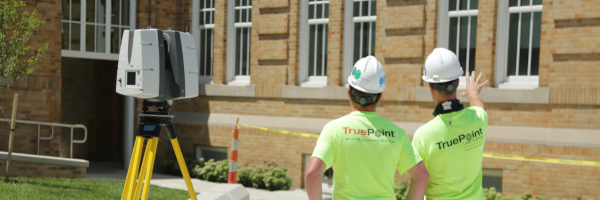
Leica has the best 3d laser scanners on the market, delivering outstanding range, speed and the highest quality 3D data.
